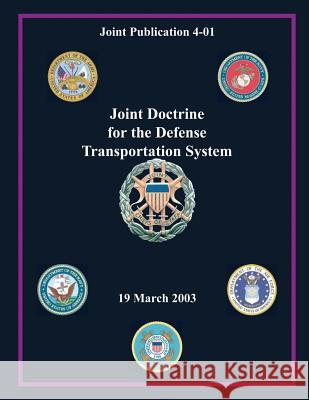Joint Doctrine for the Defense Transportation: 19 March 2003 » książka
Joint Doctrine for the Defense Transportation: 19 March 2003
ISBN-13: 9781482652666 / Angielski / Miękka / 2013 / 104 str.
The Defense Transportation System (DTS) is an integral part of the total global transportation system and involves procedures, resources, and interrelationships of several Department of Defense (DOD), federal, commercial, and non- US activities that support DOD transportation needs. Support of national strategy must include modern, flexible, responsive global transportation that is capable of integrating military, commercial, and host-nation resources. The transition period from peacetime to war may be extremely short; thus the concept of operations for the US Transportation Command (USTRANSCOM) provides for a process of global transportation management. This process establishes an integrated transportation system to be used across the range of military operations providing the most effective use of air mobility, sealift, rail, pipeline, and land transportation resources from origin to destination. The transportation database, prepared through the Joint Operation Planning and Execution System, provides commanders and planners with adequate force requirements, other deployment data, and sustainment information. The Secretary of Defense is responsible for overall transportation planning and operations within DOD. The Chairman of the Joint Chiefs of Staff reviews and evaluates movement requirements and resources, apportions capability, and allocates capability when required. The Commander, USTRANSCOM provides air, land, and sea transportation, common-user port management and terminal services per the Unified Command Plan for DOD across the range of military operations through the transportation component commands: Air Mobility Command, Military Sealift Command, and Military Traffic Management Command. This system includes the effective use of theater military and commercial transportation assets identified during and coordinated through the combatant command's joint movement center plan development. The Military Departments are responsible for organizing, training, equipping, and providing the logistic support of their respective forces as well as maintaining an effective transportation program. The Secretary of Transportation has a wide range of delegated responsibilities for allocating civil transportation resources, including executive management of the Nation's transportation resources. The Secretary of Transportation is assisted by many agencies, including the Federal Aviation Administration, the Federal Highway Administration, the Federal Railroad Administration, the Maritime Administration, Surface Transportation Board of the Office of Energy (Transportation), and the US Coast Guard. Other Federal agencies, state, and local transportation organizations and civil carriers also aid the Secretary of Transportation. There are many types of transportation resources available to DOD that are used, activated, and augmented across the range of military operations. These resources include air mobility, sealift, land, port operation, pre-positioned, and intermodal assets, both foreign and domestic. The same procedures are used across the range of military operations and forecast movement requirements, allocate resources, execute movement of people and cargo, and provide visibility of movements. During peacetime, the Services and Defense Logistics Agency are responsible for the determination, collection, and submission of the movement requirements for air mobility, sealift, and continental US civil transportation to USTRANSCOM. During wartime and/or contingencies the supported combatant commander, in coordination with supporting combatant commanders and Services, establishes movement requirements and priority by developing a deployment and/or redeployment plan for joint operations. This publication covers the interrelationships and applications of the DTS. It focuses on combatant commanders, their Service component commands, and all agencies that use the DTS.











